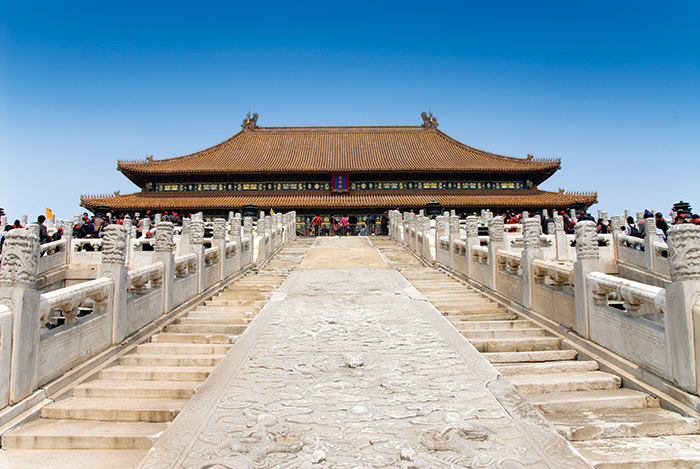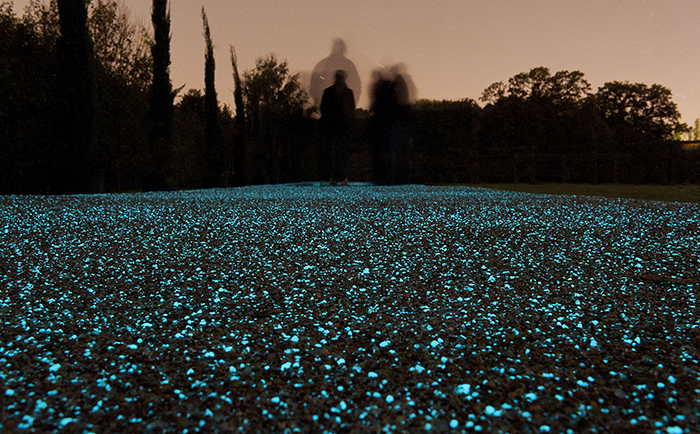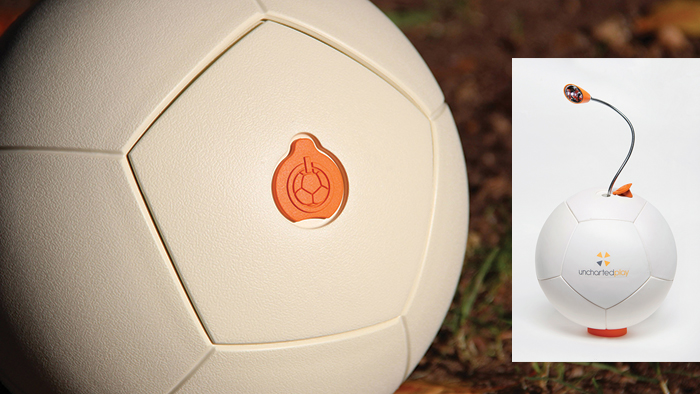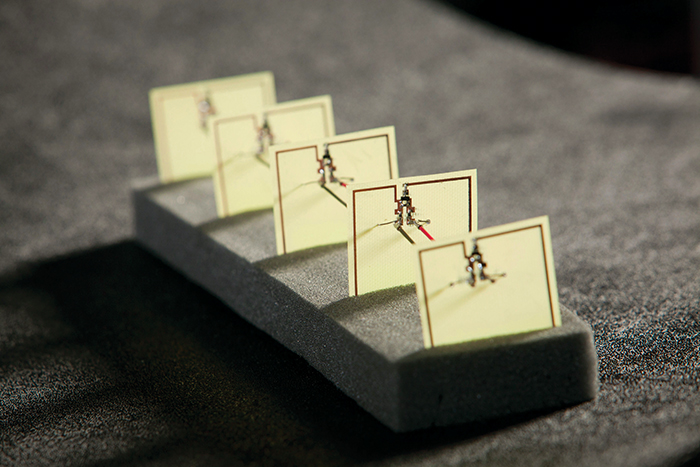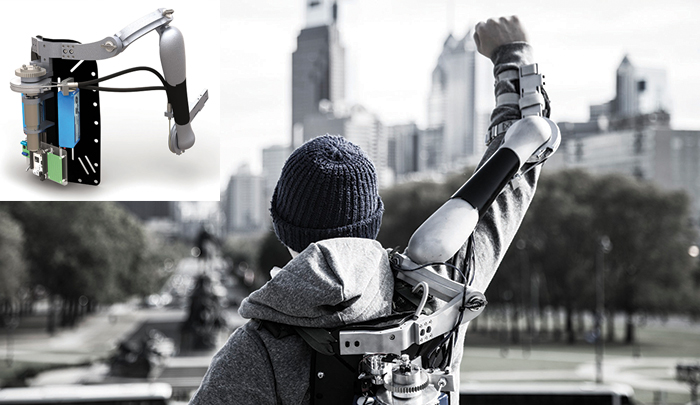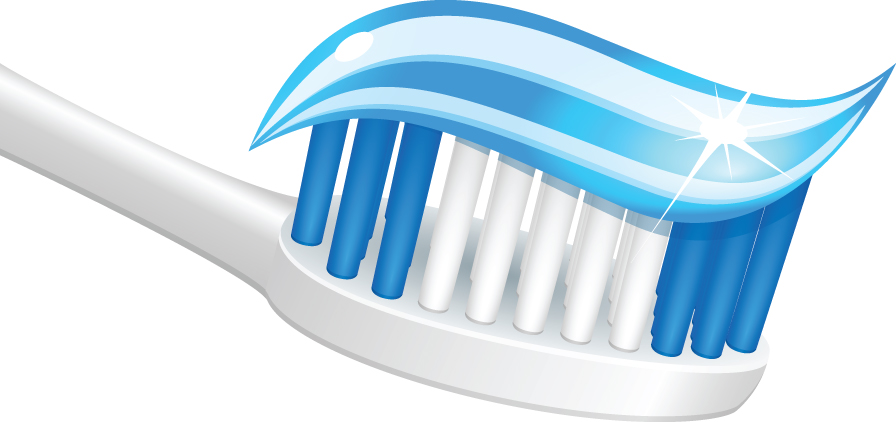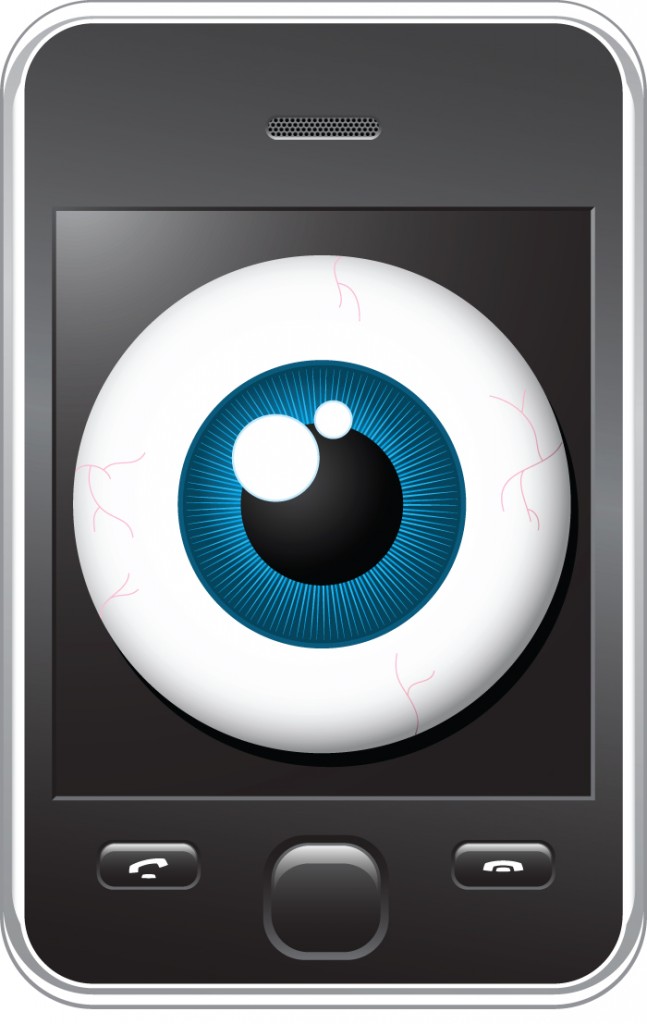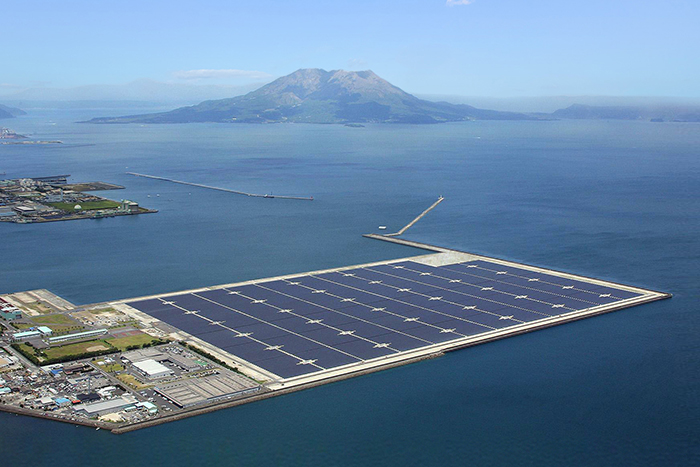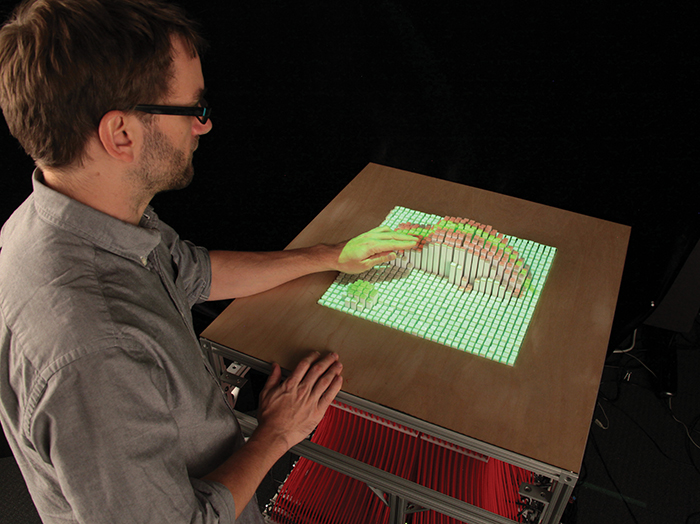Breakthroughs and trends in the world of technology.
Civil Engineering
Icy Innovation
The hub of Chinese culture and politics until 1911, Beijing’s Forbidden City has long been a mecca for tourists and historians. Yet the 500-year-old imperial compound still holds secrets – such as how engineers may have harnessed the forces of nature to help build its impressive stone palaces, walls, and towers. In a recent Proceedings of the National Academy of Sciences report, Beijing University of Science and Technology mechanical engineer Jiang Li, and engineers Haosheng Chen from National Tsinghua University and Howard Stone from Princeton, suggest a theory: Builders took advantage of Beijing’s cold winters and created ice pathways to drag and assemble huge boulders, some weighing more than 100 tons. They estimate the frozen “highways” could have reached quarries as far as 43 miles away from the construction site, and, if lubricated with water, needed only 50 men to convey the huge stones. That compares with some 1,500 required to drag such loads along bare ground. While the Chinese did use wheeled vehicles, notes the report, the carts could only carry a maximum of roughly 86 tons. – Sarah Khan
© Richard Maschmeyer/Robert Harding/Newscom
Robotics
Home on the Range?
The iconic American cowboy may soon ride herd on a joystick, thanks to Australian researchers. A team at the University of Sydney’s Center for Field Robotics reconfigured a four-wheeled rover designed to monitor fruit trees and put it to use herding cows from pasture to dairy. According to the BBC, the robot exceeded expectations: Its steady speed kept the cows walking calmly. The trial version was remote controlled, but future iterations will be fully autonomous. The BBC says the robotic herder also could collect useful information for farmers, such as the whereabouts of cows close to calving or the location of nonfunctioning electric fences. Robots already are used for milking cows, but this successful trial could expand the role of robotics in agriculture. — Thomas K. Grose
© Thinkstock
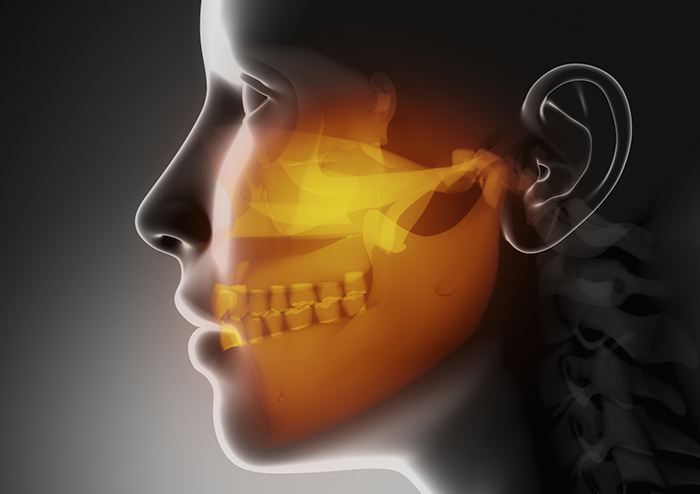
Computer-Aided Design
Custom Implants
Additive manufacturing, better known as 3-D printing, has been used to make a wide variety of objects, from airplane parts to iPhone cases. But researchers in Wales now have used the technology to produce custom-made titanium medical implants that surgeons at Swansea’s Morriston Hospital plan to use to reconstruct a motorcycle-accident victim’s badly damaged face. Researchers from the National Center for Product Design and Development Research worked with the doctors to make a CT scan of the uninjured side of the patient’s face. They then fashioned a guide that will allow surgeons to cut and position damaged bones with unparalleled precision, and to fit the implants. The computer-aided implant designs were sent to a 3-D printing specialist in Belgium for reproduction using medical-grade titanium. Doctors also mapped out the entire procedure virtually using computer-aided planning software. Peter Evans, one of the reconstructive specialists, says the operation will restore full symmetry to the man’s face. “He should be back to normal as far as his facial looks are concerned.”— TG
© Thinkstock
Materials
Brighten Up
Using street lights to illuminate sidewalks and bike paths is expensive and inefficient. But British start-up Pro-Teq has developed a spray-on bioluminescent paving material that absorbs ultraviolet rays during the day and releases the light after dark. The glow is not bright enough to replace street lights in busy areas – in fact, one of the nonreflective material’s selling points is that it emits no annoying glare. However, the bioluminescence can make pathways easy to follow at night, which would allow cash-strapped local governments to cut back on expensive lighting along thinly traveled routes. The company also is marketing the material as an inexpensive way to resurface paths. After laying down aggregate over a polyurethane base, Pro-Teq applies a bioluminescent coating and a final polyaspartic sealant. Cost: around $115 per square meter. — TG
© Pro-Teq
Social Entrepreneurship
Playground Power
Many rural areas in the developing world lack electricity, so school kids often can’t study or do homework at night. But a New York start-up founded by two Harvard Business School graduates in 2011 has found a unique method to keep portable LED lamps lit for hours: soccer balls. Uncharted Play’s Soccket weighs and looks about the same as an ordinary soccer ball, but it contains a rotating mechanism that can generate enough power in a 30-minute scrimmage to illuminate five LEDs for three hours, according to the Washington Post Innovations blog. (A cable connected to a headphone jack turns the ball into a charging station.) Uncharted Play has distributed 9,000 balls to students in Mexico, Nigeria, South Africa, and Tanzania, thanks to such corporate sponsors as Shell and Western Union. Individuals also can buy a $99 Soccket for donation. The start-up hopes that along with improving education, its product will foster play among children because “play inspires creativity, bravery, and happiness.” — TG
© Uncharted Play /Seth Olenick
Electrical Engineering
Volt From the Blue
Wouldn’t it be great if people could pull electricity out of thin air and recharge their cellphones? Duke University researchers have come up with a device that pretty much does that. A trio of investigators led by Steven Cummer, a professor of electrical and computer engineering, has taken inexpensive metamaterials and tuned them to convert microwaves to electricity. A circuit board on which the team installed and wired five fiberglass-and-copper energy conductors can produce 7.3 volts, more than enough to charge a small handheld device. It’s efficient, too, converting around 37 percent of energy to electricity, akin to a solar cell. Photovoltaic technology is a good analogy. Just as solar cells convert light waves to power, Duke’s invention can create direct-current voltage from captured microwave signals. The researchers say it could be tuned to work with other forms of wave energy, including WiFi, satellite, and sound signals. They envision the materials being built into mobile devices so they could recharge wirelessly when not in use. It also may be possible to make appliances more efficient by enabling them to recover and use energy that’s now lost when they’re switched on. Imagine playing electrified air guitars. – TG
© DUKE Photography
Engineering Design
Body Builder
An exoskeleton invented by four University of Pennsylvania mechanical engineering students won the coveted 2013 James Dyson Award for design engineering. The quartet’s upper-body exoskeleton that can rebuild muscles beat 649 other teams from 18 countries competing for the $48,600 top international prize. The Titan Arm’s main use would be to help stroke and injury victims regain strength and fine motor control by giving caregivers quantitative feedback that can be used to track how well a patient is progressing. It also could help workers who lift heavy goods avoid injuries. The team built the device for less than $2,000 using 3-D printing and computerized numerical-control manufacturing. The Dyson judges lauded the “ingenious design” as well as the team’s use of rapid and relatively inexpensive manufacturing techniques, which “makes the project even more compelling.” Penn’s Elizabeth Beattie, Nick Parrotta, Nick McGill, and Niko Vladimirov say they’ll use the prize money to improve and commercialize their device. The engineering school also received around $16,000 from the Dyson Foundation, which was started by British engineer James Dyson, inventor of the bagless vacuum cleaner, to inspire the next generation of design engineers. — TG
© Team Titan / James Dyson Award /James Dyson Foundation
Immunology
Oral Hygiene
Scraping teeth to remove tartar and keep periodontal disease at bay is a therapy that dates back thousands of years. Dentists today can prescribe antibiotics for tough cases of painful, bleeding gums. In a healthy mouth, when bacteria are kept in check, immune systems don’t kick in. But when bacteria levels soar, the body’s immune system goes into overdrive, harming oral tissue. University of Pittsburgh researchers wondered if they could trick immune systems into remaining calm despite high levels of oral bacteria. Diseased gum tissue cuts back on the production of regulatory T-cells that keep immune systems from overreacting. So Pitt’s researchers developed a paste infused with polymer microspheres that slowly release chemokine, a signaling protein that attracts T-cells. In animal trials, newly attracted T-cells kept immune systems from ramping up, despite high oral bacterial levels. The subjects also showed fewer symptoms of periodontal disease, including less bleeding, inflammation, and bone loss. — TG
© Thinkstock
Optics
Ultimate Selfie
Wearable cameras seem to be the next big thing. Google soon will debut Google Glass, a pair of camera specs that can snap a photo of whatever you’re looking at using voice activation. A Japanese project called Neurowear, which says its aim is “creating communication for the near future,” has unveiled a prototype device that goes a big step farther. Neurocam is a headband that holds an iPhone. It contains brain wave sensors that can monitor the level of interest in whatever the wearer is looking at, on a scale of zero to 100. At 60, Neurocam triggers the camera to automatically record and store a five-second GIF clip that can be replayed or shared on Facebook. Neurowear says it’s working to make the device smaller, more comfortable, and fashionable. That’s probably a good idea. Because no matter how amazing the technology, people still look silly walking around with an iPhone strapped to their noggins. — TG
© Thinkstock
Solar Energy
Sunny Side Up
After the 2011 Fukushima nuclear power plant disaster, the country pulled the plug on nuclear power and approved big incentives for renewable energy. One result of that policy change is the $280 million, 70-megawatt Kagoshima Nanatsujima Mega Solar Power Plant, which began operations November 1. The beautiful array of 290,000 photovoltaic panels jutting into Kagoshima Bay produces enough electricity to power around 22,000 homes. Its 314 acres take up enough land to accommodate 27 baseball stadiums. Meanwhile, solar updraft, a technology first suggested more than 110 years ago, could generate power in arid regions of the world. These tall chimneys are covered by a greenhouse-like protective canopy to keep sand from clogging the solar panels. Hot air created by the panels gets sucked up the chimney, turning a turbine that generates electricity. Spain built one of these solar chimneys in the early ’80s that worked for about eight years until it rusted and fell. Now balloonist Per Lindstrand, whose Lindstrand Technologies develops lighter-than-air technologies, wants to build a kilometer-tall, inflatable, solar-updraft tower in Chile’s Atacama desert to power the Alma Observatory. He tells The Engineer magazine that it would cost around $20 million to erect a 130-megawatt inflatable facility, compared with $750 million for a concrete tower. It still sounds like a tall order. — TG
© KYOCERA
Virtual Reality
Shape-Shifting
A recent video from MIT’s Media Lab grabbed attention – and for good reason. In it, Sean Follmer, a research assistant in the lab’s Tangible Media Group, appears to be reaching inside a monitor screen and playing with a red ball on a tabletop that resembles a pin-screen. The viewer eventually sees that he is merely moving his hands in the air, but his motions are captured by a Kinect system hooked to a 3-D camera. The table is composed of a 30-by-30 set of blocks, each wired to a small motor so it can move up and down with the 3-D camera as Follmer shapes a ball and rolls it between his hands. Follmer, who co-led the team that devised the inForm device, says such shape-changing user interfaces offer a way to turn digital information into real 3-D objects that can be touched and manipulated. For instance, architects have long used paper or balsa wood to make models of their designs. Shape-shifting technology would allow them – or colleagues in distant offices – to instantly alter a design instead of waiting hours to print a 3-D prototype. Another possibility: 3-D models of CT scans with which physicians could interact. — TG
© 2012 Tangible Media Group / MIT Media Lab
